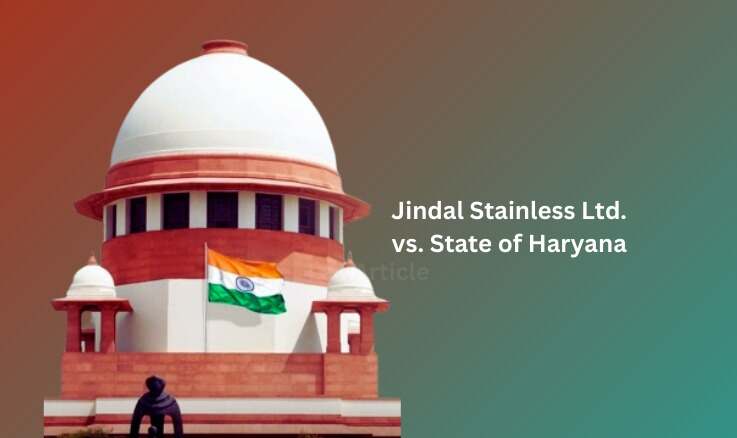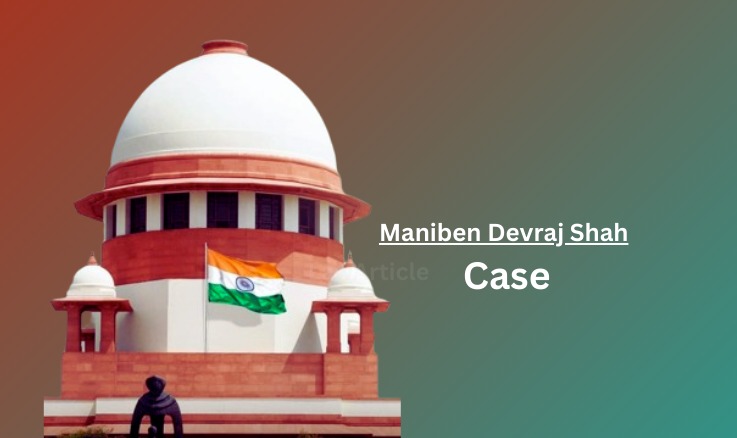Jindal Stainless Ltd. vs. State of Haryana
Equivalent citations: AIR 2016 SUPREME COURT 5617, 2017 (12) SCC 1, (2016) 11 SCALE 1, 2017 (1) KLT SN 12 (SC)
Bench: T.S. Thakur, A.K. Sikri, S.A. Bobde, Shiva Kirti Singh, N.V. Ramana
PETITIONER: Jindal Stainless Ltd.
RESPONDENT: State of Haryana.
BRIEF
The Court reaffirmed that states have the power to levy VAT on the sale of goods within their jurisdiction. This power is derived from the Constitution, which allows states to tax sales and purchases within their own borders. sales within a single state. For interstate sales, where goods are sold across state borders, the Central Sales Tax Act governs the tax obligations. Thus, VAT is not applicable to interstate sales, and such sales are subject to central taxation. The ruling acknowledged that the VAT regime is part of the state’s fiscal policy and economic structure. The Court noted that businesses must comply with the state tax regulations for intrastate sales and adhere to central tax regulations for interstate transactions. The Supreme Court’s judgment in Jindal Stainless Ltd. v. State of Haryana affirmed the state’s power to levy VAT on intrastate sales, reinforcing the constitutional validity of VAT.
FACTS
The case of Jindal Stainless Ltd. vs. State of Haryana (2016) involves a dispute over the imposition of sales tax on the sale of goods. Jindal Stainless Ltd., a company engaged in the production and sale of stainless-steel products, challenged the imposition of sales tax on sales made to other states. The dispute centred on whether the sales tax was correctly applied according to the provisions of the Haryana General Sales Tax Act, 1973. The primary issue was whether the sale of goods by Jindal Stainless Ltd. to other states should be taxed under the Haryana General Sales Tax Act The legal question revolved around the interpretation of sales tax provisions and whether the tax imposition by the State of Haryana was in line with the applicable legal framework. The case is significant for its implications on tax law and the jurisdictional authority of state versus central taxation in India.
ISSUES
- Jurisdiction for Taxation: Whether the State of Haryana had the authority to impose sales tax on sales made by Jindal Stainless Ltd. to other states, or if such sales fell under the central sales tax regime which would govern inter-state transactions.
- Applicability of Tax Provisions: Whether the Haryana General Sales Tax Act, 1973, applied to the sales in question or if the transactions should have been taxed under the Central Sales Tax Act, which is designed for inter-state sales.
- Validity of Taxation: Whether the imposition of sales tax by Haryana on these inter-state sales was valid under the prevailing tax laws and constitutional provisions. These issues required a detailed interpretation of both state and central sales tax laws to determine the correct application of tax provisions in inter-state trade.
JUDGMENTS
- Nature of Sales Tax: The Court clarified that sales tax on inter-state sales should be governed by the Central Sales Tax Act, 1956, and not by the Haryana General Sales Tax Act, 1973. This means that the sales made by Jindal Stainless Ltd. to other states should be subject to central sales tax regulations rather than state-specific sales tax laws.
- Jurisdiction and Authority: The Supreme Court emphasized that states cannot impose sales tax on inter-state transactions if such transactions fall under the jurisdiction of central sales tax law. This ruling underscored the division of authority between state and central governments regarding taxation of inter-state trade.
- Taxability and Tax Rates: The judgment highlighted that any imposition of sales tax by the State of Haryana on sales made to other states was incorrect and invalid. The central sales tax regime should be applied, which may involve different tax rates and procedures. The Supreme Court’s ruling reinforced the principles of federal tax jurisdiction, ensuring that inter-state sales are regulated consistently across India under central law, rather than being subject to varying state regulations.
ANALYSIS
Jindal Stainless Ltd., a company engaged in the manufacture and sale of stainless-steel products, contested the imposition of sales tax by the State of Haryana on inter-state sales. The company argued that such sales should be governed by the Central Sales Tax Act, 1956, not the Haryana General Sales Tax Act, 1973.
- Jurisdiction of Taxation: Whether the State of Haryana had the authority to levy sales tax on sales made to other states or if such sales should fall under the central sales tax regime.
- Applicability of Sales Tax Laws: Whether the Haryana General Sales Tax Act or the Central Sales Tax Act should govern the taxation of inter-state transactions.
COURT’ S ANALYSIS
- Central vs. State Taxation: The Supreme Court held that inter-state sales should be regulated by the Central Sales Tax Act, as this Act specifically deals with the taxation of goods sold across state boundaries. The Haryana General Sales Tax Act, being a state law, does not apply to inter-state transactions.
- Principle of Federal Taxation*: The judgment reinforced the principle of federalism in taxation, asserting that central laws take precedence over state laws in the context of inter-state trade. This distinction helps prevent legal inconsistencies and ensures a uniform tax structure for inter-state transactions.
- Legal Precedent: The Court’s decision aligns with established principles of tax law, where central legislation governs inter-state transactions to avoid fragmentation of tax policies and potential double taxation.
IMPLICATION
- Uniformity in Taxation: The ruling ensures that inter-state sales are uniformly regulated under the Central Sales Tax Act, providing clarity and consistency across different states.
- Impact on Businesses: Companies involved in inter-state trade, like Jindal Stainless Ltd., benefit from a clear and consistent tax framework, reducing the complexity of compliance with multiple state tax regulations.
- Legal Precedent: This case serves as a significant precedent for future disputes concerning the jurisdiction of sales tax in inter-state trade, reinforcing the application of central tax laws in such contexts. the judgment in Jindal Stainless Ltd. vs. State of Haryana underscores the importance of clear jurisdictional boundaries between state and central taxation laws, facilitating a more streamlined and predictable tax environment for businesses engaged in interstate commerce.
Also Read:
Rights of undertrial prisoners in India
How To Send A Legal Notice In India










